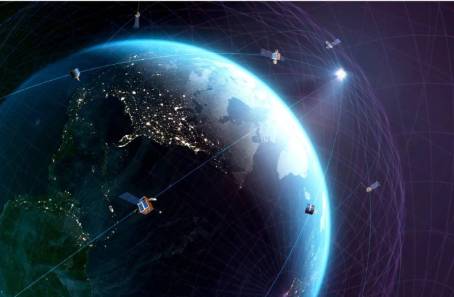The FCC has given SpaceX the green light to go ahead with its plans to offer a direct-to-phone version of its Starlink satellite internet service. T-Mobile will be the service provider, and there are a few conditions that must be met.
The plan goes back to the summer of 2022, when SpaceX and T-Mobile first said they were looking into ways for T-Mobile customers to get Starlink access on their phones. They said at the time that the service would start in 2023, but it’s now the end of 2024 and it’s just now getting approved by the government.
The deal is still a win for Starlink because it means the company can get into the US market before its competitors, such as Lynk, which is already in space but doesn’t have any US business partners. Together with T-Mobile as the terrestrial provider, SpaceX will be able to use certain wireless bands so that customers with devices that can connect can talk to each other.
But, as the heads of the companies said at the event, it’s not as simple as getting permission and starting the service. It takes a lot of hard technical work to connect a phone to a cell “tower” that’s on a satellite hundreds of miles away and moving at thousands of miles per hour. But it looks like they got this part right: the company showed off a video call six months ago, and the FCC points out that direct-to-phone connections were made possible during storms Helene and Milton to help people who were cut off get better access to emergency services.
Bloomberg was the first to report that the FCC’s filing said that the good news is clear:
We believe that SpaceX and T-Mobile’s SCS operations will have many benefits, such as making it easier for people to get emergency services in places where they wouldn’t normally be able to connect to a terrestrial network to call or text 911. For example, SpaceX’s provision of emergency SCS in areas affected by Hurricanes Helene and Milton is proof of this.
Some things can’t be done with this kind of service, which the FCC calls “supplemental coverage from space” (SCS). At the moment, it is required by law to work as an add-on to a land-based service, in this case T-Mobile. That’s because the rules for sending and receiving data in space are different from those for a phone (as compared to a base station antenna). AT&T is working with AST SpaceMobile as well.
And SpaceX has to make sure that its service doesn’t mess up other services on the ground. The services on the ground, on the other hand, don’t have to worry about whether their signals might mess up the satellite signals.
When it comes to latency and signal power, every kilometer of height counts. Starlink is 530 km above sea level. SpaceX is lucky because the FCC has given it permission to use any of the other 7,500 approved satellites at 340, 345, 350, and 360 kilometers above the Earth. People who know about this will have noticed that this is pretty close to the lower limit of the International Space Station’s orbit (370 kilometers). In fact, SpaceX will need to work with NASA to plan any deployments below 400 km.
When reading the filing, it’s interesting to see how many supposed rivals to Starlink—including Amazon’s Kuiper, DISH, Omnispace, TerreStar, and more—objected to its applications, probably to slow it down. This doesn’t mean that their arguments aren’t valid, but it’s clear that the FCC wasn’t persuaded by many of them and was happy to let SpaceX fix its applications with the right fixes.
Also Read: Spacex Signs a Second Business Deal With Moon Outpost for the Starship Moon Lander
Soon, there won’t be any more “no signal.” Luckily, many people who work in this field prefer basic access for emergencies and other times when everyone needs it over special access for Netflix at Burning Man. However, the filing doesn’t say when or how much the service will cost to launch by SpaceX and T-Mobile.
What do you say about this story? Visit Parhlo World For more.


